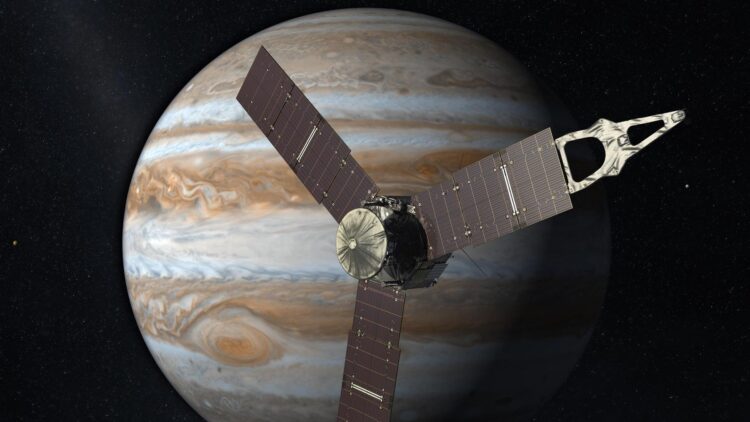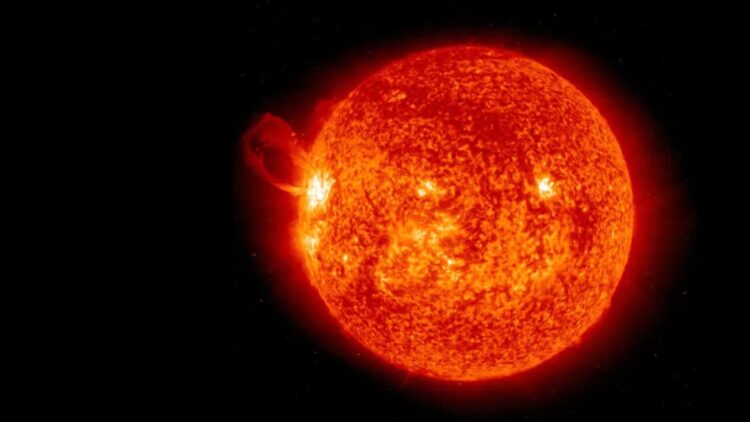Goodbye microscopes and labs new AI that detects dangerous mosquitoes in seconds is already saving lives in Africa and could soon reach Florida
No antennas, no apps Starlink now allows messaging without a network, but only with latest generation cell phones
Goodbye to cheap travel U.S. imposes mandatory integrity fee of at least $250 on foreigners with visas
Consider attempting to repair a malfunctioning camera that is nearly 600 million kilometers away. Doesn’t that sound impossible? But with JunoCam, the camera on board its spacecraft orbiting Jupiter, NASA was able to accomplish just that. NASA accomplished a high-stakes remote fix with just heat in the great void of space, where no repair personnel can be deployed and every decision takes hours to reach its target. Let’s examine how the camera was saved, what they discovered, and the implications for next space missions.
What happened to NASA s Juno spacecraft camera?
The largest planet in the solar system, Jupiter, was visited by NASA’s Juno spacecraft a number of years ago. To get a closer look at the planet, this spacecraft is orbiting it.
A unique camera known as JunoCam is one of the most crucial components of Juno. Scientists and the general public may view breathtaking views of Jupiter and its moons thanks to this camera, which captures images in visible light, which is what human eyes see.
What problem did the camera have?
NASA estimated that JunoCam would only operate for roughly 400 days when the spacecraft was developed. That is equivalent to around eight orbits around Jupiter. Why so little time? The camera is more vulnerable to Jupiter’s intense radiation because it is not inside the radiation-protected chamber. But to everyone’s surprise, the camera performed admirably for 46 orbits.
However, the camera began to malfunction after Juno entered its 47th orbit. The pictures appeared with mistakes, as though they were broken. The experts believe that the issue was most likely radiation-induced damage to a component known as the voltage regulator, which aids in regulating the amount of electricity the camera receives.
Can it be repaired from Earth?
No. The distance between Earth and the Juno spacecraft is over 600 million kilometers. Therefore, it is impossible for someone to physically fix it or replace a part there.
What solution did they try?
The researchers at NASA’s Jet Propulsion Lab experimented with annealing, which involves heating and then cooling certain camera components. This can sometimes help repair small inside damage, such as that caused by radiation.
They instructed the spaceship to turn on the camera’s internal heater by sending it a remote command. The temperature was elevated to roughly 25 degrees Celsius (77 degrees Fahrenheit), which is far warmer than what the camera is used to. They heated it, waited, and it functioned. The camera once again began to capture crisp, clear images. They heated it, waited, and it functioned. The camera once again began to capture crisp, clear images.
Was it fixed for good?
Not entirely. After a while, the image quality declined once more. Once again, the pictures turned out poorly. They experimented with various image processing techniques, but to no avail.
They then made the decision to attempt another heat cycle, although they did not specify the exact temperature this time. Once more, the heat was effective, and by the end of 2023, the camera was able to capture images of Jupiter’s moon Io.
What did NASA learn?
NASA learned from this experiment that the process of using heat to repair internal radiation damage may be applied not just to the camera but also to other areas of the spacecraft.
Scott Bolton, the mission’s principal scientist, clarified that they are learning how to construct and maintain spacecraft that are more radiation-resistant, even though they did not specify whether all the other tests were successful.
Future usage of this could benefit not only additional NASA missions but also commercial, defense, and even Earth-orbiting satellites, as they are also exposed to radiation.
And now? Is the camera still working?
Up to Juno’s 74th orbit, the camera continued to capture quality pictures. However, mistakes in the pictures resurfaced after that. NASA has not yet stated whether they plan to attempt heating it once more or what choice they will make regarding JunoCam’s destiny.
Although it may sound like science fiction, NASA really fixed a satellite camera using heat alone. In defiance of the odds, engineers successfully restarted JunoCam twice from hundreds of millions of kilometers away. Even though the camera’s destiny is uncertain, the mission has already demonstrated that even in the most hostile conditions, innovative ideas and astute reasoning can keep our eyes open. And what about Juno’s lessons? They are only starting to influence how we will investigate and safeguard the devices we send to the stars.




